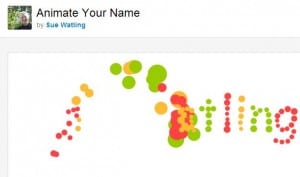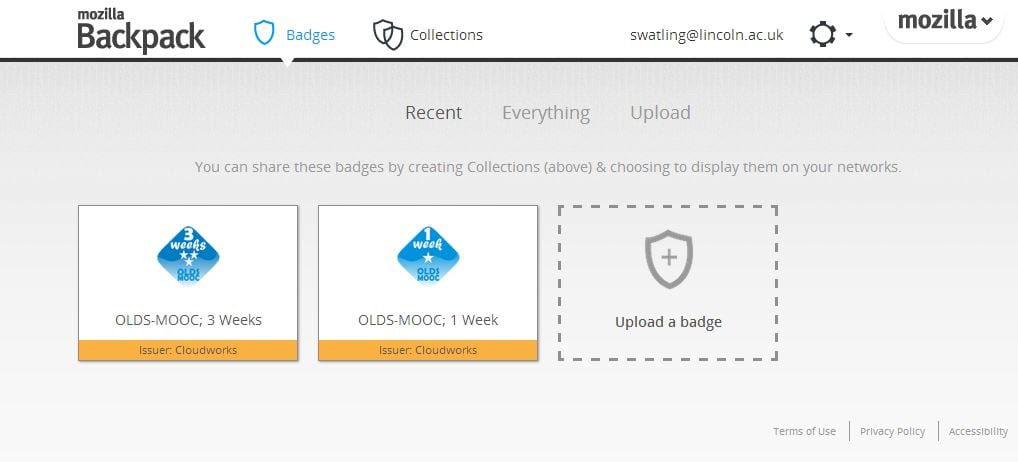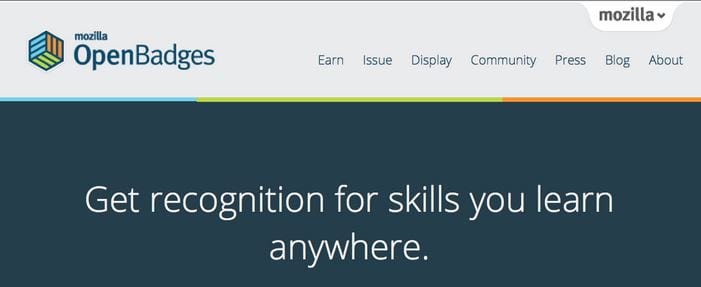I’ve been badging. Like buses, there were none for ages then they all come at once. I can’t embed my javascript animation on this page but to prove my new found skills here is the code.
|
var red = [0, 100, 63]; var myName = “suewatling”; |
It was an interactive template so not as clever as it looks. But it does look clever! Here’s a screenshot. Thank you Code Academy for the illusion of skill. Click here for the full animation.
The language of code intrigues me but this post is about badging. I gained my rewards for working through the first Code Academy lesson. They’re badges but not as I know them; these are PNG images with no metadata. Mozilla woz not ‘ere. Since Doug Belshaw’s visit in December I’ve dug deep into Cloudworks to find my OLDs MOOC site: DIY Multimedia for Teaching and Learning and made a retrospective claim so my Mozilla Backpack now looks like this.
Not much is it? I’m not really a collector. The ultimate question with all collections is what to do with them? The language of badging hasn’t caught on. My Thesaurus only recognises ‘badgers’ as animals or 50 shades of botherance – such as bedevil, beleager, bore, bother, break and bug. I entered ‘badging’ and was asked if I meant bagging, banging or bandaging. The art of badge collection has a long way to go before it reaches linguistic maturity.
Will virtual badgery catch on? Who can tell. Virtual reality is a slippery substance. There’s a risk a proliferation of badging will dilute their impact and create confusion. When is a badge not a badge? To badge or not to badge? Why badge in the first place? Alternative accreditation is a serious issue. Badging a serious attempt to create an authentic assessment system. But it’s open to people taking advantage and awarding badges here, there and everywhere for all aspects of human endeavour like arriving on time or breathing. My Code Academy badges were fun but that’s about all. The OLDS MOOC badges may have more credibility but are not fully mobile and can only be shared on Twitter, Google+ and Facebook or through my personal Open Badges URL I can’t put them where I want them which is my LinkedIn Profile and this WordPress blog.
So I’m relinquishing badge collecting in favour of…….well, I’m not sure. There’s something irresistible about gaining rewards without tears and at least they don’t have nicotine, calories or alcohol units. But like a virtual stamp album, there isn’t the appeal of something you can hold in your hand or stitch on your sleeve or backpack. When badges can be anything you want them to be then – to be honest – who’s really going to be that interested?







